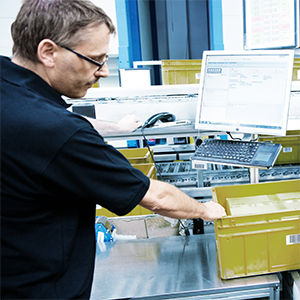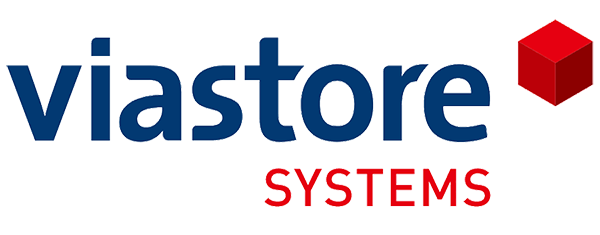Why Manufacturers Should Invest in (or Change) a WMS/WCS

Manufacturing operations that store component parts—either made in-house or supplied by another facility or vendor—may or may not rely on a warehouse management system (WMS) and warehouse control system (WCS) to track and control inventory and its movement.
Whether your manufacturing operation is considering investing in a new warehouse execution system (WES) that combines WMS/WCS software, or upgrading an existing system, there are a variety of reasons to do so. Generally, these reasons fall into one of three categories: technology limitations, strategic initiatives or process optimization.
Three types of technology limitations might prompt the integration of a new WMS/WCS. They include:
- Old Age. Perhaps your current hardware has aged past the point of being supported by the original equipment manufacturer (OEM). Outdated hardware and operating system platforms are often a reason for considering a new WMS, because the vendor cannot provide a seamless and cost-effective software upgrade. Often, this results in a level of investment comparable to installing entirely new software. Likewise, if your operation relies on automated material handling equipment, the controls for those systems are either outdated, the person(s) who support these often custom solutions are retiring or no longer around, and the functional needs may have been surpassed by the capabilities of the latest WCS offerings. If your automation systems exist in silos and cannot communicate with other systems to facilitate better tracking of inventory and optimization of processes within your facility, it’s time to consider a software and/or controls upgrade.
- Business Changes. Change is inevitable, especially in business. Today’s consumers want specific products with customized options delivered as quickly as possible (and for free). If your current software lacks configurable options or modification support to accommodate changing customer demands, variable order profiles, process optimization, faster delivery times, as well as many other challenges, it’s time to change to one that will.
- Existing ERP Constraints. Many corporations have standardized on specific enterprise resource planning (ERP) systems—such as SAP, proALPHA, Infor, Oracle, NetSuite or Microsoft Dynamics—to improve synergies across their operations. While all of these ERPs offer a WMS component, the out-of-the-box offering may not precisely match your manufacturing facility’s ideal inventory management process. Likewise, it may not interface easily with current or planned automation systems. Seek out an experienced WMS/WCS integrator who can leverage your ERP system to ensure your process is optimized within corporate specifications.
Nearly every strategic initiative is undertaken to formulate a plan for growth. A new WMS/WCS may be called for to accommodate a variety of undertakings, including:
- The addition of more product lines or SKUs,
- Mergers or acquisitions of other companies or brands,
- Location of a new production line or product in an older manufacturing plant, or
- Retrofitting of an existing facility to support improved processes, updated technology and automation capabilities.
Whether your manufacturing operation stores component parts made in-house, or supplied by another facility or vendor, there are several opportunities for a new WMS/WCS to enhance process optimization. These include:
- Manufacturing from Raw Materials. If your current inventory management system is a spreadsheet or an antiquated WMS, it likely cannot adjust easily to track the rapidly expanding amounts of information assigned to each stock keeping unit (SKU) in your production queue. The latest warehouse management software, however, can accommodate all data edits and additions—including format changes to inbound goods, and inventory tracking requirement modifications to batch, quality, lot, version control, serial numbers and other identifiers. Further, raw material information can be automatically captured, manipulated and shared across the supply chain to provide greater detail and better visibility for inventory track-and-trace and management of goods.
- Assembly of Component Parts. Operations practicing postponement to meet the desire of consumers for product customization might also look to reduce their work-in-process (WIP) inventory (the number of piece parts and materials awaiting value-added assembly operations) for cost savings. The right WMS/WCS can satisfy both objectives.
For example, when production demands increase, an operation might convert from batch processing to sequential assembly, where partially- to fully-automated solutions would be ideal to support the new process flow. An experienced software provider can configure a flexible inventory and control system that modifies existing processes on the same conveyor and workstation equipment to support goods-to-man inventory retrieval when needed.
The software should be able to handle many other aspects of your inventory and process management, enabling cross-facility synergies to provide additional benefits and enhance your operation’s return on investment (ROI).
Related: Target Considers Help for Its Grocery Supply Chain

Related Whitepapers:
viastore Speeds Up Supply Chain of Kaeser Compressors
Material Handling System Choices
3 Signs You Should Modernize Your Automated Storage and Retrieval System
4 Reasons for Making the Case for Automation
- Just-in-Time (JIT). For operations that source component parts from outside suppliers or different facility locations (or deliver items on a JIT basis), the right WMS/WCS can support a varied—but continuous—process flow, as well as improve inventory accuracy and tracking throughout the supply chain. Simultaneously, having increased access to part data and visibility into material flow supports cost reductions while still ensuring that high-quality finished products are delivered to your customers when needed.
- Lean Initiatives. Frequently, the mandate to reduce waste throughout a process—in overproduction, delays, movement of materials and people, inventory, handling and scrap—can best be supported through investments in automation. For manual operations, Lean frequently means more reliance on technology. Yet, to better track inventory and eliminate unnecessary handling steps, disparate automated systems within an operation (and throughout a supply chain) need to communicate. With a properly integrated WMS/WCS, an operation can enhance Lean objectives through:
- Improved advance ship notice (ASN) receiving
- Enhanced crossdocking functionality
- Optimization of people, equipment and processes
- Establishment of supplier rating and audit programs
- Better leveraging of data for business process flow optimization and tracking
- Current (or Planned) Automation. Operations looking for opportunities to automate a portion of their manufacturing or receiving and shipping processes will maximize the return on their investment only by integrating current or planned automation technologies via an agile WMS/WCS. With the flow of information optimized to manage materials and inventory, as well as for coordination and control of the equipment and personnel handling it, a manufacturing operation can ensure that an investment in automation will meet desired productivity objectives.
Article Topics
viastore systems News & Resources
Updating Existing Warehouse Equipment and Software Can Mitigate Today’s Fulfillment Challenges Turning Existing Warehouses into Efficient, Optimized Fulfillment Machines Automation as a Cold Chain Labor Strategy Best Practices for a Successful Cold Storage Automation Implementation Automation: An Effective Labor Strategy in Cold Chain Warehousing and Distribution AS/RS Modernization Reduces Downtime and Saves Thousands of Dollars at Food Service Facility Automation Considerations for Frozen Product Storage More viastore systemsLatest in Warehouse|DC
U.S. Manufacturing is Growing but Employment Not Keeping Pace Maximize Warehouse Space with Mezzanine Automation: Expert Tips Most Companies Unprepared For Supply Chain Emergency Microsoft Unveils New AI Innovations For Warehouses Spotlight Startup: Cart.com is Reimagining Logistics Walmart and Swisslog Expand Partnership with New Texas Facility Taking Stock of Today’s Robotics Market and What the Future Holds More Warehouse|DC














